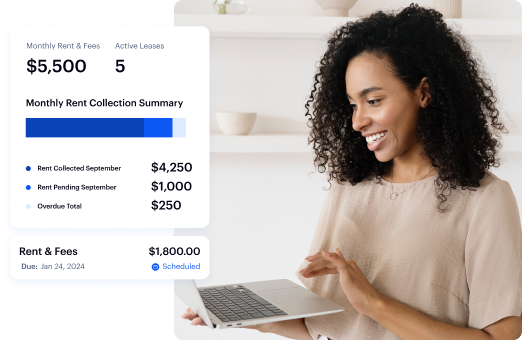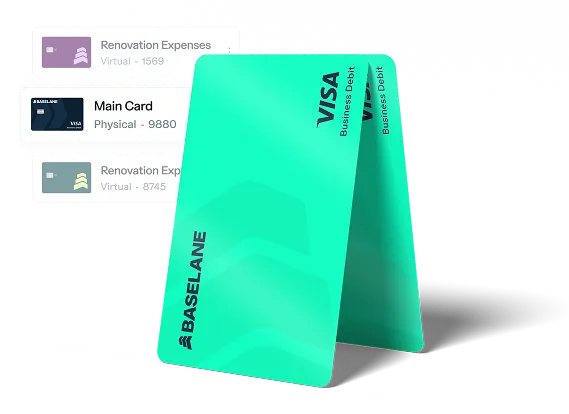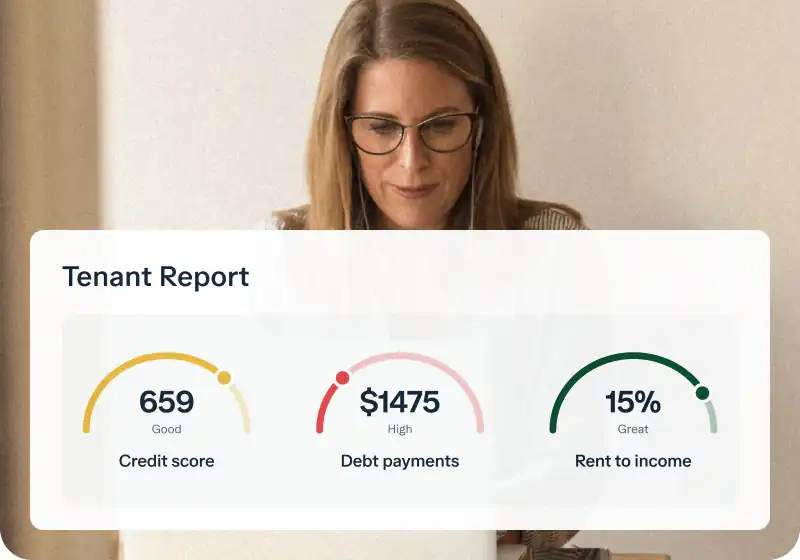Real estate investors and landlords consistently seek ways to maximize their returns and efficiently manage their finances. High-yield savings accounts (HYSAs) with no minimum balance requirements and low or no fees offer an attractive solution.
These accounts allow you to grow your liquid funds significantly more than traditional savings options, providing both security and enhanced earning potential. For property owners, understanding how to leverage these accounts can lead to smarter financial planning and increased passive income.
Key takeaways
- High-yield savings accounts offer significantly higher Annual Percentage Yields (APYs) compared to traditional savings accounts.
- The best HYSAs in 2025 often feature no minimum balance requirements and no monthly fees, providing optimal flexibility.
- Federal Reserve policy heavily influences HYSA rates, which have remained relatively stable but slightly decreased in recent months.
- HYSAs are federally insured up to $250,000 per depositor by the FDIC or NCUA, ensuring the safety of your funds.
- For rental property owners, HYSAs are ideal for managing emergency funds, property reserves, security deposits, and HOA funds.
What is a high-yield savings account?
A high-yield savings account is a deposit account that offers a higher interest rate than a standard savings account. These accounts are typically offered by online banks, which have lower overhead costs than brick-and-mortar institutions. They pass these savings on to customers in the form of better yields, according to NerdWallet.
While a traditional savings account might offer around 0.38% APY on average, HYSAs can provide Annual Percentage Yields at or above 4%, with some reaching up to 5% APY as of July 2025.
This significant difference means your money grows much faster in a HYSA. For example, a $10,000 balance at 4% APY would yield approximately $400 after a year, compared to about $40 in a traditional account with 0.40% APY. To explore more, you can read about high-yield online savings accounts.
Why choose a HYSA with no minimum balance or fees?
Opting for a high-yield savings account with no minimum balance requirements or monthly fees provides critical flexibility for your finances. You can start saving with any amount and avoid penalties for dipping below a certain threshold. This is especially valuable for landlords and small business owners who experience fluctuating cash flows.
No fees means that all your earned interest directly contributes to your savings growth. This approach ensures your savings work optimally for you, rather than being eroded by unnecessary charges. It simplifies financial management, allowing you to focus on growing your real estate business.
Current high-yield savings account landscape 2025
The high-yield savings account market in 2025 continues to offer attractive rates for savers. Many top HYSAs maintain Annual Percentage Yields (APYs) at or above 4%. Some of the most competitive accounts can even reach up to 5% APY as of July 2025.
Overview of current rates and trends
These rates significantly surpass the national average for ordinary savings accounts. That average currently hovers around 0.38%, demonstrating the clear advantage of HYSAs. Online banks are particularly noted for offering these higher yields due to their lower operational costs.
Factors influencing HYSA rates
Federal Reserve monetary policy heavily influences HYSA rates. The Fed has maintained its target range (4.25%–4.50%) since December 2024 and held it unchanged in its latest meeting on June 18, 2025.
This policy has led to relatively stable, yet slightly decreased, savings APYs over the past several months. Future rate changes will continue to depend on the Federal Reserve's decisions regarding inflation and economic outlook.
How to choose the best high-yield savings account
Selecting the ideal high-yield savings account involves more than just looking for the highest Annual Percentage Yield (APY). You should consider a range of factors that align with your financial goals and operational needs. Understanding these elements helps ensure the account supports your overall strategy.
Key considerations beyond APY
Beyond the interest rate, examine any associated fees, such as monthly maintenance fees or transaction fees. Assess the accessibility of your funds, including withdrawal limits or transfer times. Evaluate the quality of customer service and available support channels.
Always confirm that the financial institution is federally insured. For instance, Baselane banking accounts have FDIC insurance available for funds on deposit through Thread Bank, Member FDIC. Pass-through insurance coverage is subject to conditions.
Understanding minimums and requirements
While this guide focuses on accounts with no minimum balance, some HYSAs might require a minimum initial deposit to open. Others may require certain activities, like direct deposit, to unlock the highest APY.
Carefully review these terms to ensure they fit your saving habits. Choose a provider that simplifies your financial operations. For guidance on selecting a banking solution tailored to your needs, consider researching which bank to choose.
Strategic uses of HYSAs for rental property owners & small businesses
High-yield savings accounts are not just for personal emergency funds; they are powerful tools for rental property owners and small businesses.
They help you keep essential funds liquid while maximizing their earning potential. Strategic use of these accounts can improve your financial organization and resilience.
Building an emergency fund for your properties
Unexpected property repairs or tenant vacancies can quickly deplete your cash flow. A dedicated HYSA for an emergency fund ensures you have readily available capital to cover these unforeseen costs. Earning a high yield on these funds means your safety net grows over time.
Setting aside funds for property reserves and capital expenditures
Successful property management requires planning for future large expenses, known as capital expenditures or replacement reserves for real estate. Setting up a property reserve in a HYSA allows these funds to accumulate interest while you save for a new roof, HVAC system, or major renovation.
This ensures funds are ready when needed, without tying them up in illiquid investments. Consider an Operating Reserve Bank Account for real estate to manage these critical reserves.
Managing security deposits and rental cushions
Landlords are often required to keep tenant security deposits in separate, interest-bearing accounts. A HYSA is an excellent choice for this, ensuring compliance and potentially earning a return on these held funds.
Additionally, setting aside a rental cushion or escrow cushion in a HYSA provides a buffer against late payments or vacancies.
Allocating HOA reserve funds
For property managers dealing with homeowners' associations, managing HOA reserve funds responsibly is crucial. Placing these collective funds in a HYSA allows the HOA to earn interest, helping offset future common area maintenance or capital projects.
It's a smart way to ensure the financial health of the community. Baselane also helps HOAs find specialized solutions; explore HOA banks for more.
Benefits of separate accounts
Using separate HYSAs for different purposes, such as a dedicated bank account for each property or for specific reserve funds, offers unparalleled clarity. This practice simplifies bookkeeping and helps you accurately track income and expenses per unit.
For Airbnb hosts, a specific Airbnb bank account can streamline financial oversight.
This separation is equally beneficial for sole proprietors managing rental properties. A sole proprietor bank account in a high-yield setting ensures your business finances are distinct and optimized for growth. Baselane's banking solutions allow for unlimited accounts by property, streamlining this process.
Integrating with digital banking for landlords
The true power of HYSAs for landlords comes from integrating them with comprehensive digital banking solutions. Platforms offering landlord digital banking can provide centralized visibility over all your accounts, including HYSAs, checking accounts, and property-specific ledgers.
This integration empowers you with real-time insights and automated financial management. Baselane's banking platform, for instance, offers up to [v="apyvalue"] APY². APY on deposits and allows for the creation of unlimited accounts by property, helping you organize and grow your money effectively.
Maximizing interest on reserve accounts
Don't let your reserve funds sit idly in low-interest accounts. By placing them in a HYSA, you can significantly increase the reserve account interest earnings. This strategy contributes to your overall passive income and strengthens your financial position as a property owner.
Baselane's accounts help investors earn interest on their deposits, contributing to their bottom line.
Practical steps to get a high-yield savings account
Opening a high-yield savings account is typically a straightforward online process. Most online banks have streamlined their application procedures to be quick and user-friendly. Taking this step can significantly improve your financial health.
Ready to make your money work harder? Learn how to get a high-yield savings account.
Online application process
Start by choosing an account that best fits your needs from the recommended list. Navigate to the bank's website and look for the "Open Account" or "Apply Now" button.
The application will usually guide you through several steps, including providing personal information and linking an external bank account.
What documents do you need
You'll generally need basic personal identification details, such as your Social Security number or Taxpayer Identification Number. Be prepared to provide a valid government-issued ID, like a driver's license or passport. Some banks may also ask for proof of address.
Funding your new account
Once your account is approved, you'll need to fund it. The most common methods include electronic transfers (ACH) from an existing bank account, wire transfers, or mobile check deposits. Some accounts may have a minimum initial deposit requirement, although many of the best HYSAs in 2025 have none.
Important considerations for HYSA users
While high-yield savings accounts offer numerous benefits, it's essential to understand their nuances for effective management. Being aware of safety measures, accessibility, and tax implications will help you make the most of your HYSA. These insights ensure informed decision-making for your financial assets.
Are high-yield savings accounts safe?
High-yield savings accounts offered by legitimate banks and credit unions are federally insured. Deposits are protected up to $250,000 per depositor by the Federal Deposit Insurance Corporation (FDIC) for banks, or by the National Credit Union Administration (NCUA) for credit unions.
This insurance ensures that your money remains safe and accessible, even if the financial institution fails.
Understanding withdrawal limits and accessibility
While HYSAs offer liquidity, they are subject to Regulation D, which historically limited certain withdrawals or transfers to six per monthly statement cycle. While Regulation D has been suspended, banks may still impose their own limits on transactions from savings accounts.
Always check the specific bank's policies regarding withdrawal frequency and methods to ensure your funds are accessible when needed.
Tax implications of HYSA interest
Interest earned from a high-yield savings account is considered taxable income by the IRS. Financial institutions will typically issue a Form 1099-INT if you earned more than $10 in interest during the previous year. It's wise to factor these potential tax obligations into your financial planning.
Struggling to keep track of your funds? Discover how to effectively organize your bank account for different financial goals.
Alternatives to high-yield savings accounts
High-yield savings accounts are excellent for short-term savings and emergency funds, but they are not the only option for growing your money. Understanding alternatives can help you diversify your financial strategy. Different financial products serve different purposes and risk tolerances.
Money market accounts vs. HYSAs
Money Market Accounts (MMAs) often come with check-writing privileges and a debit card, offering more accessibility than HYSAs.
They typically have variable interest rates similar to HYSAs but may require higher minimum balances. MMAs can be a good hybrid option if you need both savings growth and some transactional flexibility.
Certificates of deposit (CDs) vs. HYSAs
Certificates of Deposit (CDs) offer fixed interest rates for a set period, from a few months to several years. They often provide higher APYs than HYSAs, especially for longer terms.
However, your money is locked in for the CD's duration, with penalties for early withdrawal. CDs are suitable for money you won't need immediate access to.
Checking accounts vs. HYSAs
Checking accounts are designed for everyday transactions, bill payments, and frequent withdrawals. While some checking accounts offer minimal interest, their primary purpose is convenience and accessibility, not earning high yields.
They are generally not ideal for storing significant savings. Looking for everyday banking solutions with no hidden costs? Explore the best no-fee checking accounts or consider a free online business checking account for your operations.
Investments vs. HYSAs
Investments like stocks, bonds, or mutual funds offer the potential for much higher returns than HYSAs, but they also carry greater risk. Their value can fluctuate significantly, and there is no guarantee of return.
Investments are suitable for long-term growth objectives where you can tolerate market volatility, unlike HYSAs, which prioritize safety and liquidity.
Bottom line
High-yield savings accounts with no minimum balance and low or no fees represent a powerful tool for optimizing your financial resources in 2025. They offer a secure and accessible way to grow your funds, significantly outperforming traditional savings options.
For real estate investors and landlords, these accounts provide the flexibility needed to manage diverse financial goals, from emergency funds to property reserves.
By strategically utilizing HYSAs, you can streamline your financial operations, reduce stress, and focus on expanding your portfolio. Take action today to ensure your money is working as hard as you are.
Sign up now and start maximizing your savings and empowering your real estate business. Baselane offers banking solutions tailored for landlords, providing high-yield savings capabilities to help you gain clarity and control over your finances.
FAQs
1. What is the primary benefit of a high-yield savings account?
The main benefit is earning a significantly higher Annual Percentage Yield (APY) on your savings compared to traditional accounts. This allows your money to grow faster without taking on significant risk.
2. Are high-yield savings accounts federally insured?
Yes, high-yield savings accounts at banks are federally insured by the FDIC (Federal Deposit Insurance Corporation) up to $250,000 per depositor. This protects your funds in case the financial institution fails.
3. Can I withdraw money from a high-yield savings account anytime?
While HYSAs offer liquidity, banks may impose their own limits on the number of certain withdrawals or transfers per statement cycle. It is important to check the specific bank's policies regarding transaction limits and accessibility.

















.jpg)